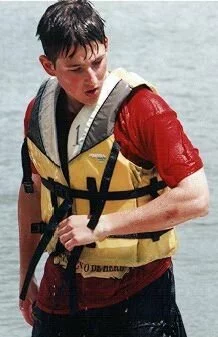
Over 6 Years of Fun in Wet Clothes
Swim fully clothed for fun and fitness. The extra resistance of wet clothing provides good exercise.
| Magazine | Fashion | Photos | Sports | Teenagers | Vacations |
|---|
 Over 6 Years of Fun in Wet Clothes |
Wet News Chat Forum Mudpit Page 141 Swim fully clothed for fun and fitness. The extra resistance of wet clothing provides good exercise.
|
| Your Message |
Your Name Your Email |
X |
|
Welcome to our Wet Sports SectionSwimming in clothes has grown into a major trendsport. You see it in films, adverts, and pools or beaches near you. Several websites already mention "wackywet" as a new sport. Now you too can join in the fun, build up extra stamina and enhance your health. Your clothes are the aquatic equivalent to weightlifting. The extra resistance provides great exercise. There are many sports where you can get soaking wet. These folders contain info and photos of these wet sports. |
||
|
It is very important to learn to swim well in clothes and early in life!
A high percentage of drowning deaths occur in "spontaneous" situations where the victim had not actually intended to get wet. These tragedies actually underscore the value of our hobby. What appears to be just fun and a good overall experience, also builds strength and stamina, and could save your life one day. Supervised practice by any reasonable swimmer is recommended. Safety and preparedness are important and can be practiced! The Boy Scouts of America teach buoyancy wet clothing techniques as part of the Lifesaving Merit Badge. That is one of the required MBs for Eagle Scout. Safety Considerations At first forget that old story: Clothes don't pull you down in the water. They merely cause more inertia. Wet clothes cause no illness directly, bad discipline does. Watergames in winter, swimming during a thurderstorm, and the like are dangerous. By swimming in clothes teenagers can get a feeling for what one day could be important to save themselves or others. To teach the basic elements of lifesaving, first aid and water safety is our job. Clothes avoid sunburn and injuries. To take young people into bright sunlight without a sun cover is irresponsible. We all know of the skin cancer this causes. You also see often barefoot kids between broken bottles and sharp drink cans. It seems some parents accept serious injury more than wet clothes. |
Water Safety
Let's face it, we're into thrill-seeking, and thrill-seekers will never get a straight answer from legitimate "mainstream" sources. Gather local advice and tips from dive shops rather than tourist bureaus. Also many lifeguards are into wet clothes, so ask them.  |
Please follow these simple rules:
|